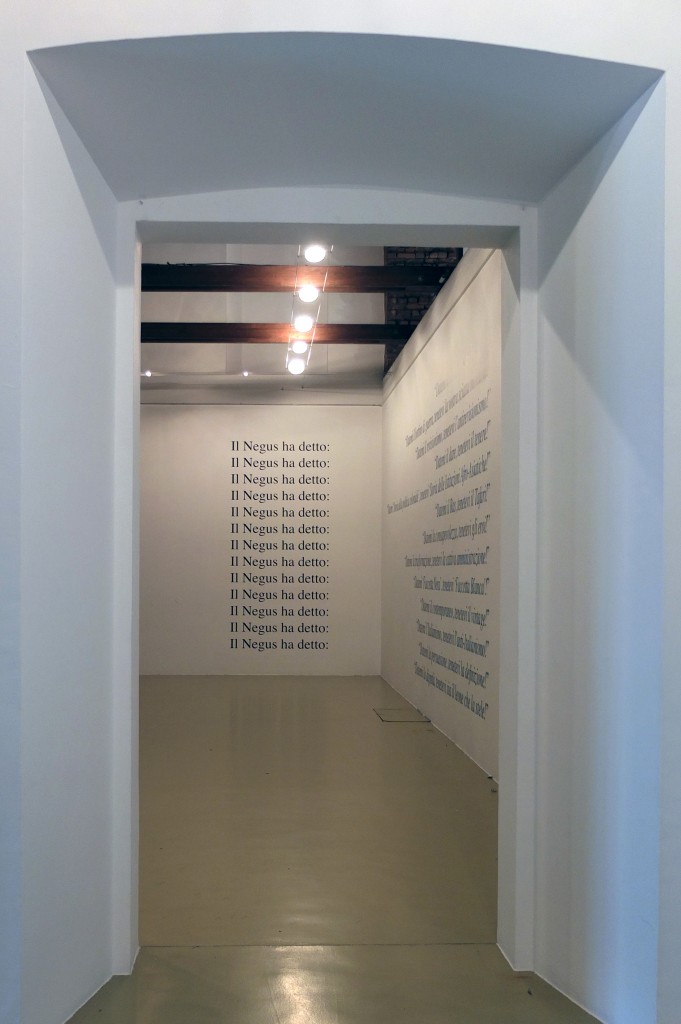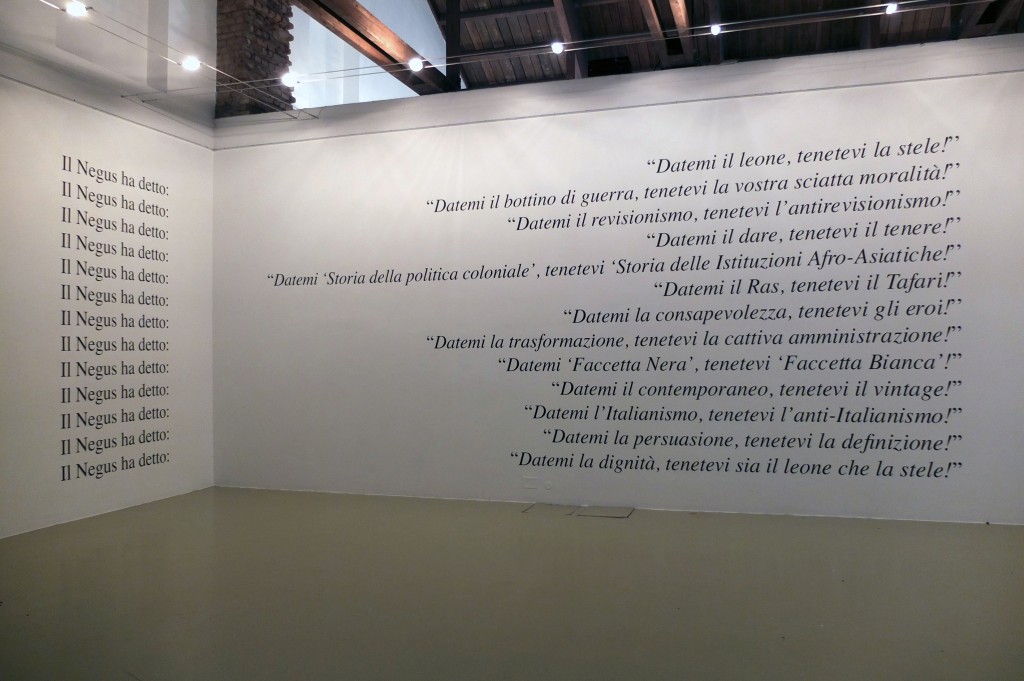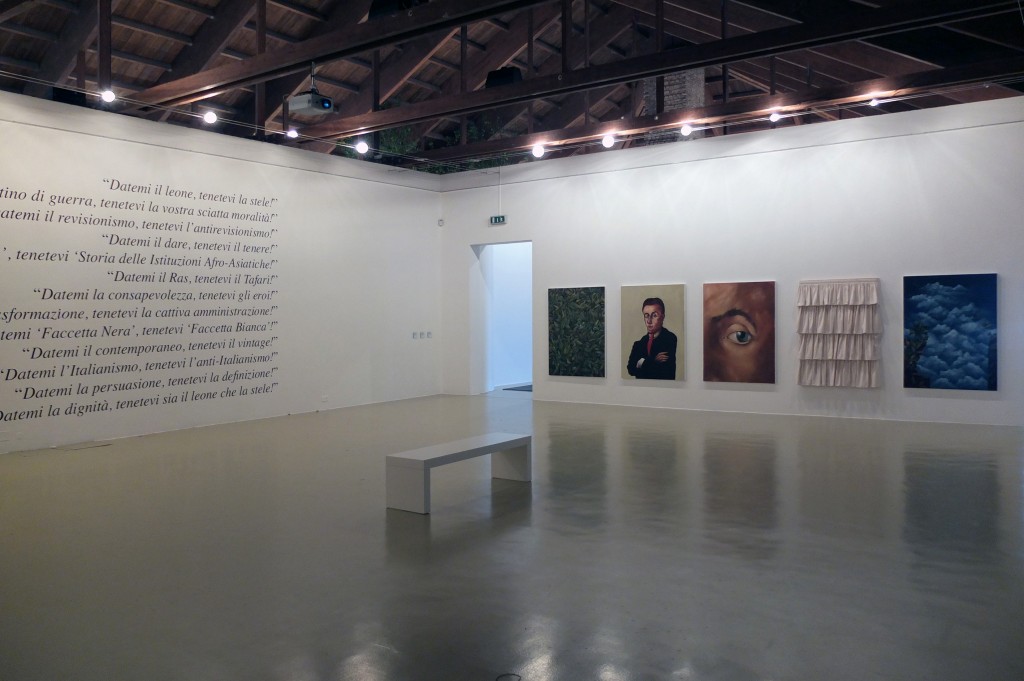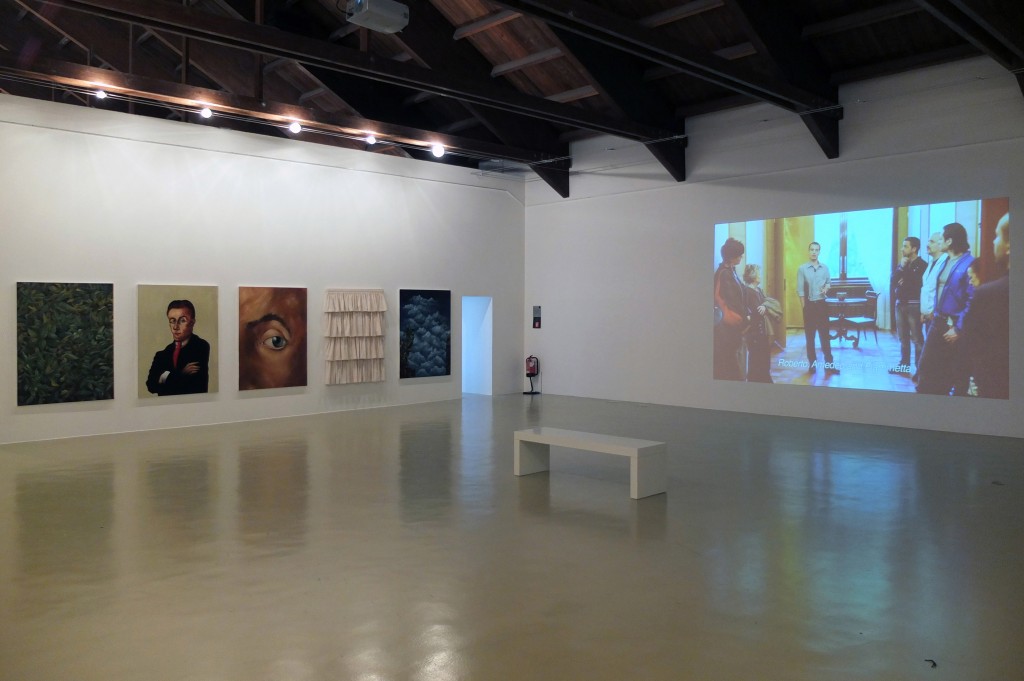Il Negus ha detto: “Datemi il leone, tenetevi la stele!”, 2010-12, installation view Castello di Rivoli
Il Negus ha detto: “Datemi il leone, tenetevi la stele!”, 2010-12, installation view Castello di Rivoli
Il Negus ha detto: “Datemi il leone, tenetevi la stele!”, 2010-12, Portrait of Alfredo Casella, 1924, 2012,
installation view Castello di Rivoli
Portrait of Alfredo Casella, 1924, 2012, Flight from disorder (Vogue ed.), 2011,
installation view Castello di Rivoli
p
p
LA STORIA CHE NON HO VISSUTO (TESTIMONE INDIRETTO), RIVOLI, SEPTEMBER 16 – NOVEMBER 18 2012
curated by Marcella Beccaria, with Francesco Arena, Rossella Biscotti, Patrizio Di Massimo, Flavio Favelli,Eva Frapiccini, goldiechiari and Seb Patane
The autumn exhibitions programme at the Castello di Rivoli opens on September 15 with History I Never Lived Through (Indirect Witness), a major new exhibition entirely dedicated to young Italian art. The show, hosted in the large rooms on the third floor of the former Savoyard residence, has been planned and curated by Marcella Beccaria. This new and important exhibition has been made possible by the generous contribution of theSupporting friends of the Castello di Rivoli and it is realized with the Media Partnership by La Stampa and RAI – La Storia siamo noi.
Francesco Arena, Rossella Biscotti, Patrizio Di Massimo, Flavio Favelli,Eva Frapiccini, goldiechiari and Seb Patane are the protagonists of History I Never Lived Through (Indirect Witness); they have been chosen as being representative of a new generation of Italian artists who use the history of Italy as the subject of their work. Interpreted in a wide range of forms and choice of media, the works on display focus on some of the periods that have tragically marked the history of Italy over the 20th century.
Including works produced especially for the occasion and others that deserve renewed attention, the exhibition provides renewed impetus for the programme promoting young Italian art, already manifested by the Castello with the support of its Friends through a Scholarship for young Italian artists.
The exhibition will be accompanied by a packed programme of collateral events dedicated to Italian history and literature, and by a fresh vision of the facts and events analysed in the works.
The exhibition
Italian contemporary art has formed its own sphere of autonomy over the past thirty years, and it has been characterised by a gradual shift away from the country’s historical and political affairs. Those artists who have been exceptions to this tendency have in turn often been relegated to secondary positions and their works still await a more objective assessment.
Today a new generation of young Italian artists is coming to the fore with a vision of Italy as an essential area of investigation. These artists, who include Francesco Arena, Rossella Biscotti, Patrizio Di Massimo, Flavio Favelli, Eva Frapiccini, goldiechiari and Seb Patane, have all made names for themselves by creating works that, even in the wide variety of their artistic languages and expressions, have focused on some of the key events that shaped Italy in the twentieth century. From colonial ambitions to the years of terrorism, through to massacres and dark powers, the works created by these artists often refer to tragic,uncomfortable facts that still cast a shadow on the present day, in some cases continuing to divide public opinion. Several works concern events that took place before the artists were born or during their early childhood. The artists’ interest in these particular events in Italian history bears dramatic testimony to the way in which the past weighs heavily even on those who did not live through it. Opening up to a broader debate, the exhibition also examines the fraught relationship that ties the present to the past and to the process of reconstructing and interpreting history.
History I Never Lived Through (Indirect Witness) presents these artists for the first time in a coherent museum project. As well as specially made new works, the exhibition intentionally brings together some of the most significant pieces conceived by this generation of artists over the past five years, acknowledging them as key elements on which to write a new chapter on Italian art and to offer the general public possible new takes on present-day Italy.



